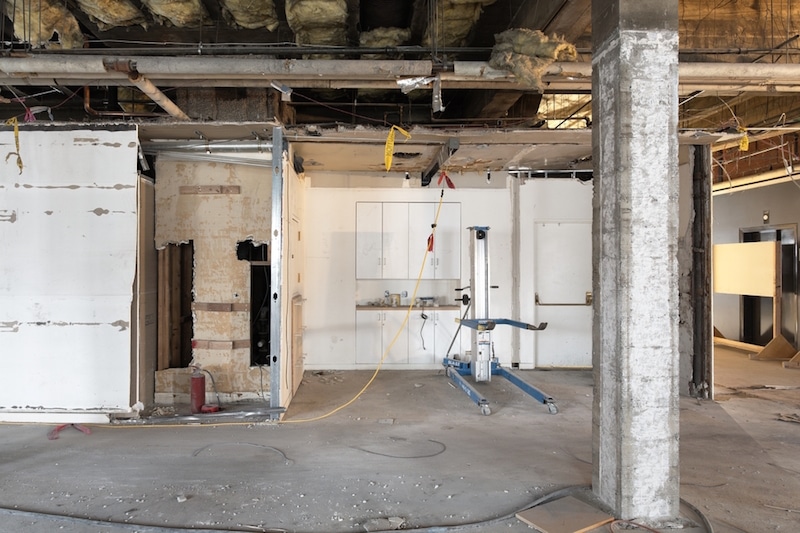Rising electricity prices, climate change and a sagging economy continue to drive public and private institutions to focus on energy efficiency in the built environment. Today, buildings consume around 40% of generated energy, which makes investing in energy efficiency critical in efforts to reduce our unsustainable demand for energy.
Let's remember that building doesn’t have to be new to be efficient. Today’s leading building owners are converting existing buildings into models of sustainability. For many building owners, however, capital costs create the primary barrier to investing in a retrofit, and many building owners, real estate developers and commercial businesses alike, are still not fully aware of the potential savings such a retrofit could bring.

Retrofitting technology could save up to 60% of a building's energy consumption and this would translate into direct savings in energy expenditure. However, energy technology alone is only part of the answer. There are also other barriers to retrofitting such as financial, legal and political impediments.
In order to tackle these issues, Italian, Rome based, energy efficiency company, Officinæ Verdi, has developed an innovative building management system (BMS) that can directly link energetic performance to financial impact.
The company provides services, advanced technological solutions and access to financing for distributed, renewable energy generation to households, private businesses and public agencies. "We are involved in technology-payback analysis; this means we evaluate the financial sustainability of each technology", says Giovanni Tordi, CEO of Officinæ Verdi.
Officinae Verdi's mission is to develop and promote a sustainable model for the distributed generation of electricity, in which consumers have the capacity to produce their own energy, thereby reducing network inefficiencies and greenhouse gas emissions. To achieve this, it provides customers with support in installing photovoltaic systems, wind turbines, heat pumps and other technologies, and it offers an extensive menu of advisory services on energy efficiency, carbon management, building retrofits and environmental certifications.
As an EESCO (energy-environment service company), Officinae Verdi will support large firms and institutions by implementing energy retrofitting plans with the help of UniCredit’s project finance. By using what is called “Finance through Third Parties”, the revenue flows originated from the energy savings of the project will, in fact, pay back the financing costs and the EESCO’s work. A customer that decides to implement retrofit operations will be able to benefit from a share of savings in the bill immediately, while the remaining part will repay the initial investment.
For a typical commercial building, HVAC accounts for about 40% of the energy costs, and lighting another 20-30%. Furthermore, continued deployment of smart grid technology increases the case for creation of smart buildings. Smart buildings can communicate with the grid, making the most of available efficiency methods and dynamic pricing, whereby electricity prices can shoot up to five or ten times the normal rates during peak periods.
In newer smart buildings, Energy Management systems can “listen” to the smart grid pricing signals, and remotely control and optimize air-conditioning/heating set points and lighting levels accordingly during peak periods. Meanwhile, older buildings without Auto-Demand Response ability could be looking at very disruptive and expensive retrofits, especially for buildings older than 15 years. These buildings often have pneumatic HVAC control systems, no lighting dimming controls, and may have asbestos embedded in the construction.
[contact-form-7 id="3204" title="memoori-newsletter"]
In fact, the majority of commercial buildings still use pneumatic thermostats, which are not programmable and non-communicating. Retrofitting them to conventional DDC involves opening up walls and ceilings, running cabling and replacing actuators, and incurring labour costs and tenant disruption.
The costs run into several thousand dollars per thermostat; payback on retrofits is often seven years or longer, and this is main the reason that most existing pneumatic installations are not upgraded. Similarly, retrofitting lighting controls traditionally involve high cost and disruption due to the same reasons. We cover the market for Commercial Wireless Lighting Controls in detail in our research report - http://memoori.com/portfolio/smart-buildings-wireless-lighting-controls-2014-to-2018/
Leveraging the latest technologies to perform the retrofits will help to reduce the upfront cost and payback periods, and minimize the disruption to tenants. Strong policy, incentives and financial support will also serve to encourage buildings to retrofit smart / efficient systems.
However, perhaps the key to increasing smart retrofits is developing greater understanding and awareness of the true potential savings available per building, and creating innovative payback methods to enable widespread adoption.



